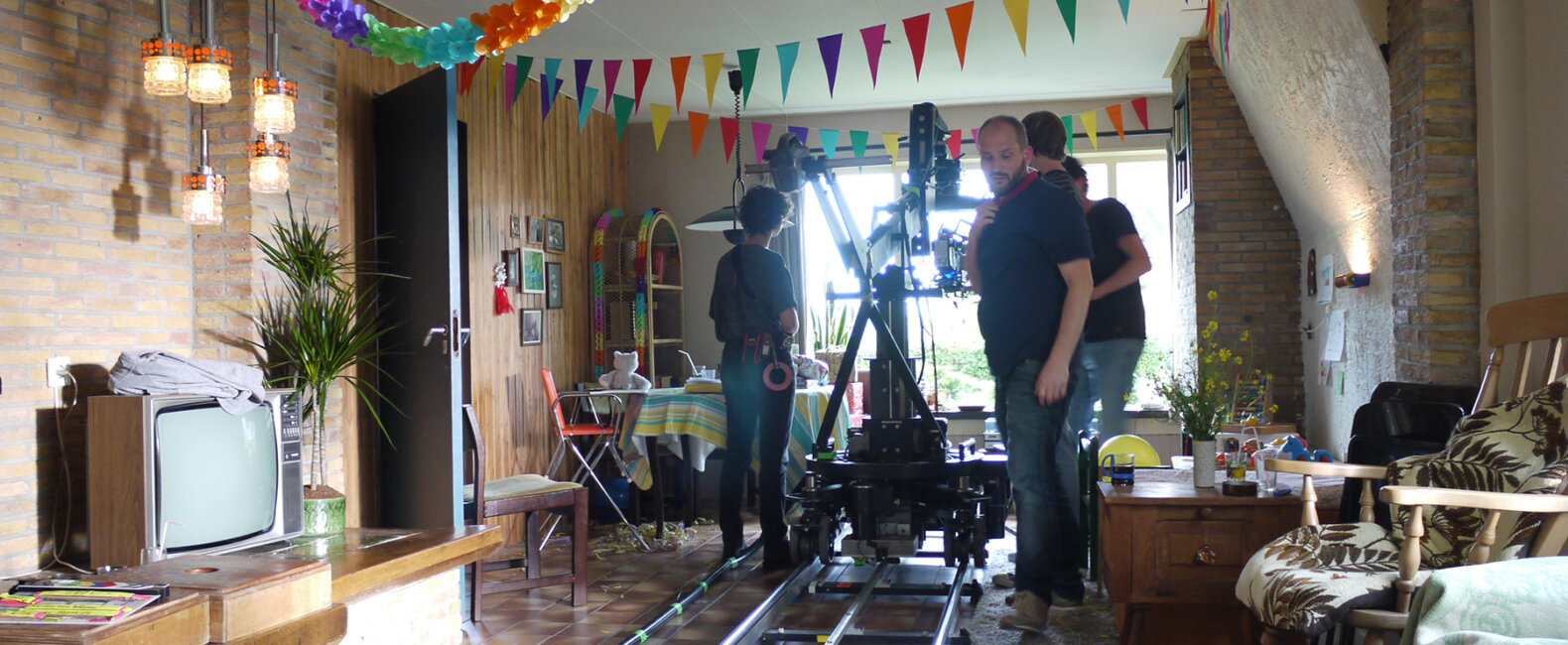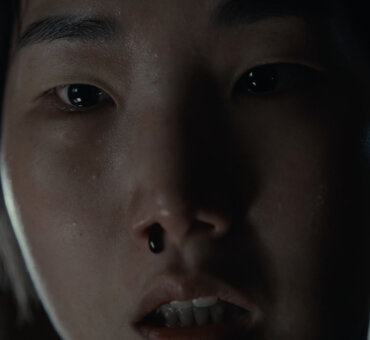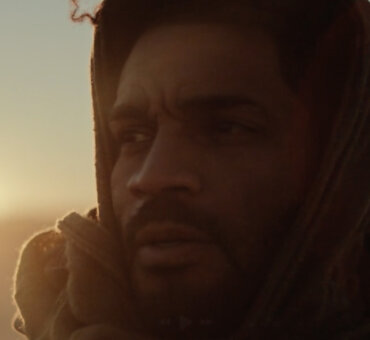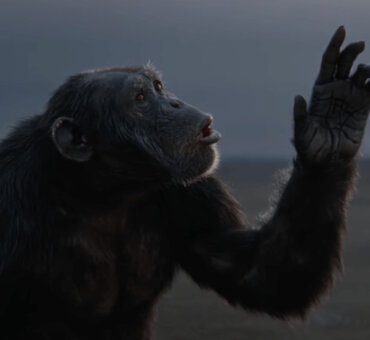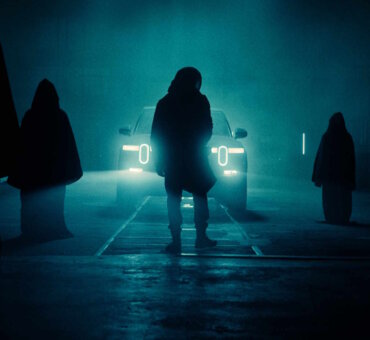The narrative of a family steeped in turmoil is perhaps the most relatable story that can be told. And rightly so — it’s happening on every block in every city in every country, not to mention every era. In Growth – a beautifully simple film with conflicts that feel as familiar as a box filled with your childhood memorabilia – Netherlands-based director Sil van der Woerd weaves a narrative of small squabbles that, over the course of 20 years, finally spin out of control. In a single room. In a single shot.
The film smartly depicts the way memories can distort and blend together as we get further and further away from them. “When I think of my memories, I never recall specific words. What sticks with me are feelings, colors, scents, seasons,” van der Woerd recently told us. This sort of sense memory led the charge for every creative element in the film, including the pitch-perfect setting created by the film’s production designer, Romke Faber, and the team’s decision to incorporate a motion control system called Panther. The technically advanced system allowed van der Woerd and his team to capture repetitive, seamless camera movements based on preprogrammed 3D designs. Despite the sleek sound of a rig named after a jungle cat, the challenges it presented made the shooting experience anything but, “This equipment is like an elephant moving through the room. … It’s just going to move on or hit you.”
We spoke to van der Woerd and Faber about the dizzying disintegration of a family’s love in Growth.
What were your goals when you set out to make this piece?
Sil van der Woerd: The film was born, so to speak, when I walked past the house where I grew up. At some point I realized my entire childhood — nearly 20 years — and all the intense moments within it, had gotten compressed into this collection of distorted memories over time. I thought, That’s what we become as we grow up. We’re kind of like collections or libraries of memories. The sensation of all these memories swirling around you in a single moment — the way they often do when you travel home for the first time in a long while — was a sensation I wanted to capture on film. So I decided I wanted to find a way to compress time and highlight a lot of moments that may occur out of context, but really stick with you as you age.
We aren’t beholden to one character’s POV in this piece. Why did you make that decision?
Sil: To me, this film is about the dynamic of a family as a whole, not a single character. So the voyeuristic approach we took felt right. And, in a way, we’re witnessing this story from the perspective of the room itself. I consider the room a character. It’s almost as if it opened up to us and released what took place inside of it.
What was the appeal of this story to you as a production designer, Romke?
Romke Faber: What I immediately connected with is the time period. I grew up in the ’80s and ’90s. My parents are divorced, so of course that really resonated with me. I like stories with a lot of immediacy. Growth is, as I see it, about two brothers witnessing their parents growing apart, which is incredibly relatable and direct. It stirred up a lot of memories and feelings about the time period, which really influenced where we went with the design.
How did you react when Sil told you, “I’m going to shoot with a spinning camera”?
Romke: [laughs] I loved the challenge it presented. I thought, OK, let’s experiment. Let’s see how we can make it happen with the budget we have and the story you’re envisioning, and let’s go full force with it. I wasn’t worried though. Sil has a visual effects background, so he came to the table with a good sense of whether or not it was realistic.
What were your responsibilities in bringing the world of the film to life?
Romke: For me, when I look at a film and take out the actors — that’s the canvas I have to work with. So for this film, Sil and I spent a lot of time talking about finding the right location, both spatially and aesthetically. We knew the different time periods we were playing with in this piece meant our options were limited in terms of the major structural elements of the home. We asked ourselves questions like: How did the interior of most houses look at the time? How did the housing trends change from 1978 to 1998? And why? We had a lot of fun going through old weekly magazines, trying to nail down what the interior ought to look like. We looked at something like 10 years’ worth of these old magazines, so we could see how the interior of houses evolved, furniture and all.
How do you go about crafting conflict with minimal audible dialogue?
Sil: When I think of my memories, I never recall specific words. What sticks with me are feelings, colors, scents, seasons. There’s a little bit of dialogue in the film, but what they’re saying is irrelevant. Instead, we see and hear how the family members make each other feel. The conflict is conveyed through moods, body language, color, weather, and sound. There are a lot of subtle things for the viewer to pick up on as we go from the sunny, simple home in the beginning, to that final scene where everything has changed.
The space the film plays out in feels like a pressure cooker of sorts.
Romke: Well, when you look at the house as a character, like Sil mentioned, it really shows this sense of warmth and safety; it’s very welcoming. It’s a small and tight space with wooden walls and warm, darker colors, but it feels nice. And as the parents slowly drift apart emotionally, you feel the tension becomes unbearable, and that small space starts to feel claustrophobic. Then when the father breaks down the wall and enlarges the room, there’s more space; but it’s still filled to the rafters with tension.
Sil: We decided the parents would ultimately expand the house because it’s going to grow increasingly tight for a family of four. But underneath it all, they’re compensating. The parents are unable to give in love because love no longer lives between them. So instead, they start to give in material things. In addition to nice toys and presents for the boys, they try to provide a bigger room and modern updates. But the children ultimately sense the lack of love and become burdened by that.
What was the appeal of using such technically challenging equipment?
Sil: It may sound funny, but this equipment always seemed like a magical thing to me when I saw it used in music videos. Because it gives you the ability to mimic the motion from a previous shot, you can use it to accomplish a ton of interesting things. We used it to string together different periods of time, and we couldn’t have done it quite like that with a different setup. It definitely made things harder for us when Romke and I were looking for a location. Like, how do we place 8 meters of track in a living room and still have enough space for the camera to rotate?
What other challenges did it add to the shooting experience?
Sil: The actors had the biggest struggles to deal with because the camera moves at the programmed speed, no matter what you’re doing in front of it. This equipment is like an elephant moving through the room. There’s much less freedom to improvise or take time and play with the scene, because this machine is just going to move on or hit you.
What was the most rewarding part of making this film happen?
Sil: Behind every production, there’s a story that you craft for yourself as the filmmaker. I recently went back through all of the behind-the-scenes images and videos, and I kind of had the same experience I had when I walked past the house where I grew up. We had a lot of intense moments in the two weeks we were shooting. Major technical issues, a lot of stress — some days were incredibly difficult. But we also had some very peaceful moments; I smile just thinking about the art team having lunch in the living room sitting at the ’80s table. I actually slept in the house throughout the shoot because someone had to be with the equipment at all times. I had a mat on the floor in the living room, and one day I woke up in the house alone. I thought, You’re in a set, next to this weird equipment, telling the story of your childhood. When I look at all of those images, I have the exact same feeling. So, in some ways, the experience of bringing this story to life is just as meaningful to me as the end product.
